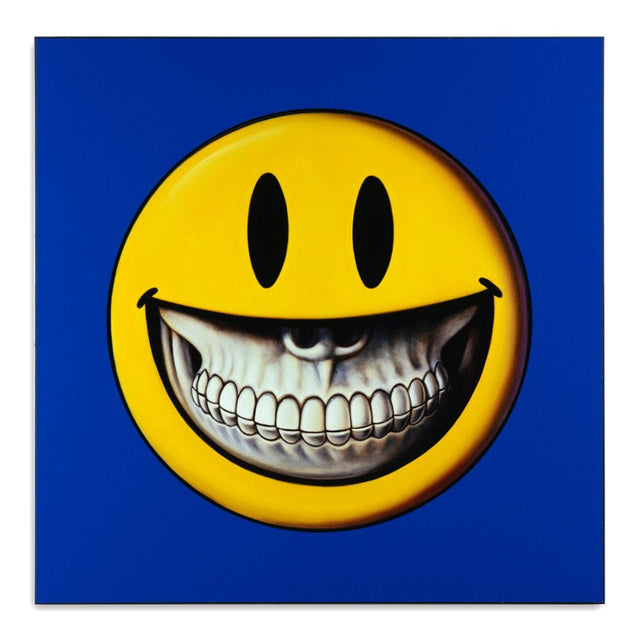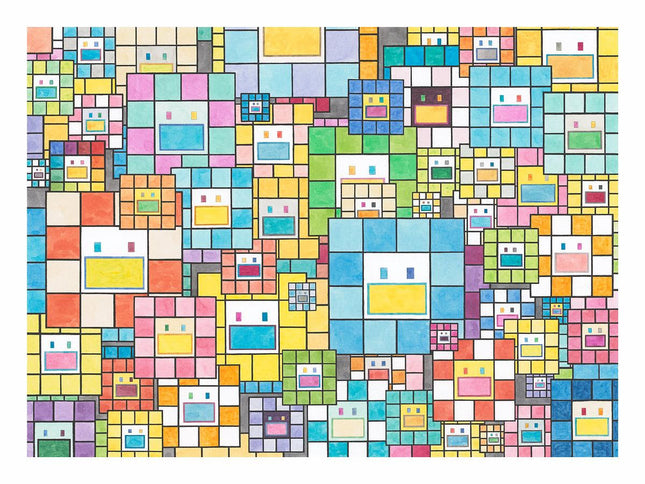
Smiley Face
-

Adam Lister Homage to Murakami Flowers Archival Print by Adam Lister
Homage to Murakami Giclee Print by Adam Lister Artwork Limited Edition Print on 300gsm Hot Press Matte Paper Graffiti Pop Street Artist. 2023 Signed & Numbered Print Limited Edition of 50 Artwork Size 18x24 Archival Pigment Fine Art Takashi Murakami TM/KK Multi Ms Flower Super Flat in Glitch Style Adam Lister's Homage to Murakami: A Vibrant Fusion of Street Pop Art and Graffiti Artwork The Homage to Murakami giclee print by Adam Lister reinterprets the iconic Flower motifs of Takashi Murakami, a Japanese contemporary artist celebrated for his Superflat movement. Created in 2023, this limited-edition work is a signed and numbered print, restricted to just 50 pieces, making it an exclusive collectible for art enthusiasts. Rendered in Lister’s signature glitch-style aesthetic, the artwork is printed on 300gsm hot press matte fine art paper using archival pigment technology, ensuring a strikingly vivid and durable finish. Lister’s interpretation transforms Murakami’s vibrant, cheerful flowers into a pixelated, geometric arrangement that retains the playful and colorful spirit of the original while imbuing it with a distinctly modern edge. The 18 by 24-inch print captures the essence of both artists’ works, blending Murakami’s whimsical imagery with Lister’s deconstructed and digital-inspired visual language. This fusion creates a unique dialogue between the two artists, bridging the playful flatness of Murakami’s Superflat movement and the fragmented yet structured approach characteristic of Lister’s work. The Evolution of Iconic Imagery in Street Pop Art Adam Lister’s Homage to Murakami exemplifies the transformative potential of Street Pop Art and Graffiti Artwork. By drawing inspiration from Murakami’s iconic Flowers, Lister brings a fresh perspective to a globally recognized symbol of joy and simplicity. His pixelated reinterpretation reflects the digital age’s impact on visual culture, while simultaneously echoing the accessibility and immediacy of street art. Lister’s glitch-style aesthetic deconstructs the forms into geometric blocks, giving the flowers a mosaic-like quality. This technique transforms the traditional flatness of Murakami’s original works into a layered, multidimensional composition. It retains the bright color palette and symmetrical patterns that define Murakami’s art while introducing a contemporary, pixel-based reinterpretation. This process of abstraction and reconstruction highlights how modern artists reimagine classic themes within new contexts, making them relevant to contemporary audiences. The Artistic Significance of Giclee Printing The giclee printing process used in Adam Lister’s Homage to Murakami is integral to the artwork’s presentation and longevity. Archival pigment printing ensures exceptional color accuracy and depth, preserving the vibrancy of Lister’s bold hues and geometric patterns. The use of 300gsm hot press matte paper adds a soft texture to the print, enhancing its tactile appeal and elevating it to a fine art standard. Lister’s decision to limit this edition to 50 pieces adds to its exclusivity, making it a sought-after item for collectors. Each print is meticulously signed and numbered by the artist, providing authenticity and a personal connection to his creative process. This combination of technical excellence and artistic vision solidifies the print’s place in contemporary Street Pop Art and Graffiti Artwork. Adam Lister’s Contemporary Reinterpretations Adam Lister continues to push boundaries in the art world by reimagining iconic works and motifs through his unique glitch-style approach. Based in the United States, Lister’s art bridges cultural and temporal divides, offering fresh perspectives on familiar imagery. His Homage to Murakami celebrates Takashi Murakami’s contributions to art while simultaneously asserting Lister’s distinctive artistic voice. By merging elements of Street Pop Art and Graffiti Artwork with references to global artistic traditions, Lister creates works that are both visually engaging and conceptually rich. The Homage to Murakami print stands as a testament to his ability to reinterpret beloved symbols in ways that resonate with diverse audiences, blending playfulness, sophistication, and cultural commentary into a single, cohesive artwork.
$788.00


